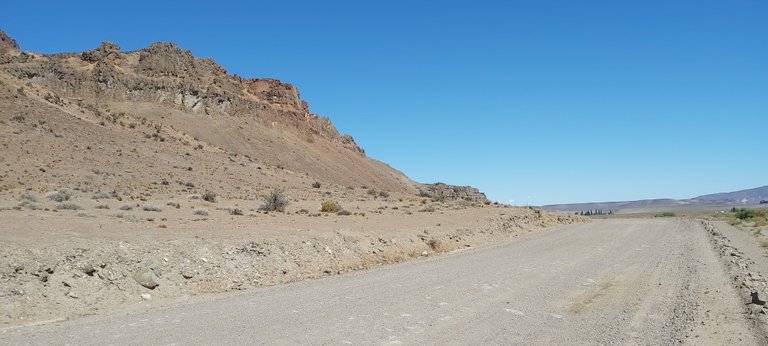
The steppe can be shocking, distressing, and even repulsive for the unsuspecting visitor. The harshness of its extremely arid and desert climate where rainfall is scarce causes flat bushy vegetation with abundant bare soil around it, the panorama can cause sadness and in fact, this state appropriates the character of most of the few inhabitants of the region who are generally quiet, reserved and shy.
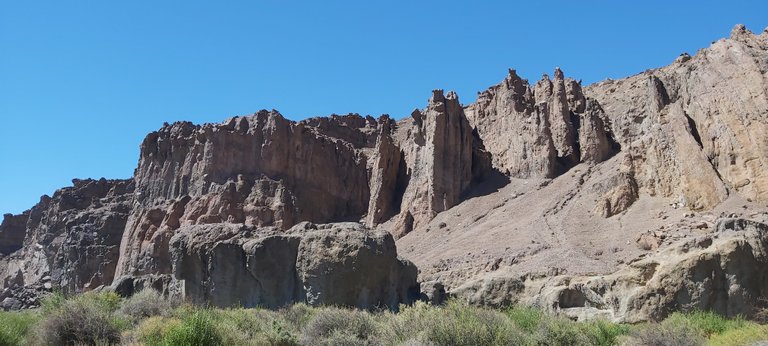
However, there is life in the steppe, the few rivers that cross it can represent oases of water and green and abundant vegetation, an absolute contrast with the rest of the geography.
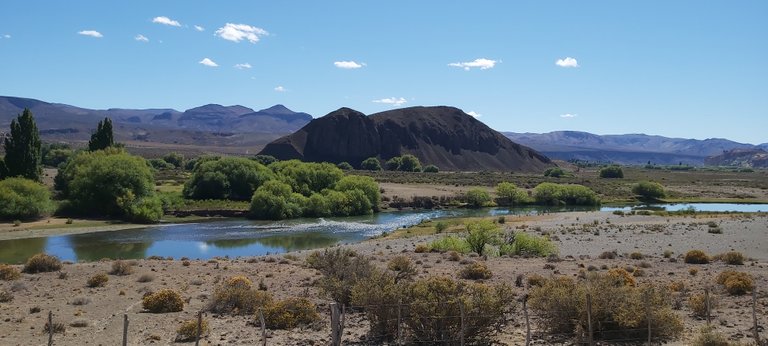
The poorly traveled dirt and dust roads are usually close to the riverbed, it is a way of being close to a water source that may be scarce or non-existent for many kilometers around. The dirt and dust paths along the river can mean the difference between life and death.
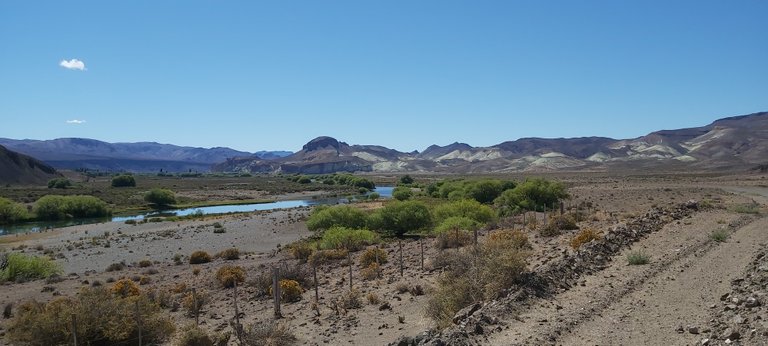
On the way to one of the most beautiful expressions of the Paleogene period, with an age of almost 60 million years, a large caldera that exploded in a gigantic eruption left an enormous depression 25 kilometers in diameter and almost at its southern vertex, various formations worth to observe and admire that they have become an exceptional tourist destination.
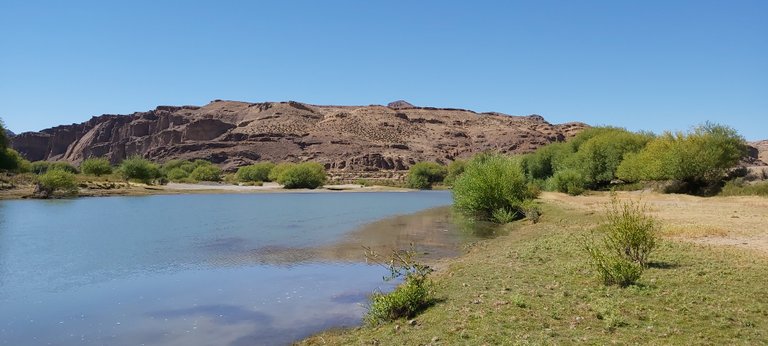
The road runs alongside the Chubut River, a low-flow watercourse that rises in the province of Río Negro in the eastern foothills of the Andes Mountains to deposit its waters in the Atlantic Ocean after traveling more than 800 kilometers. Many inhabitants of the plain owe their lives and their livelihood to the waters of this river, the first Welsh immigrants attest to this.
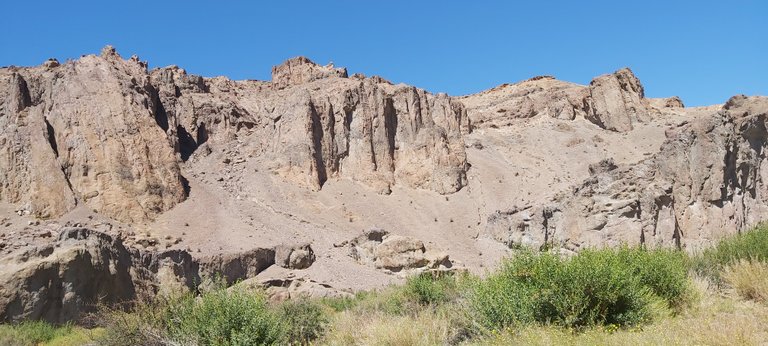
Between the folds of these volcanic rock formations, the low hills form a canyon that serves as a frame for the riverbed, its walls and foothills have strange shapes that water and wind erosion modeled in so many millions of years, in a way it reminds me to the Enchanted Valley that is on the way to the city of Bariloche, a place with much more marketing surely but with similar charm. Here we can play to find shapes and give them names; castles, foxes, windows, hands, prehistoric animals, birds, any visitor with a little imagination will be able to see some of these figures looking at one of the innumerable formations in the surroundings.
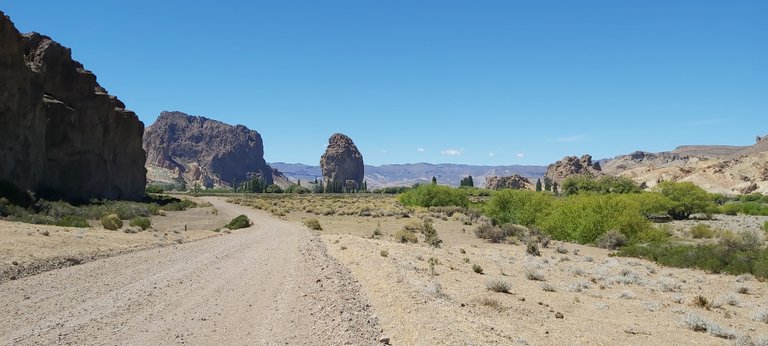
A legend of the area speaks of a condor, that magnificent flying bird that is among the largest in the world, that was so ecstatic by the magnificence of the place that it forgot everything, even its own existence, and remained perched on the vertex of a high hill until it turned to stone. From there he watches that the river continues to flow, from there he watches the dusty road reminding visitors that the steppe can also be fascinating, beautiful, and captivating, so much so as to give life to it just for the possibility of observing it for all eternity.
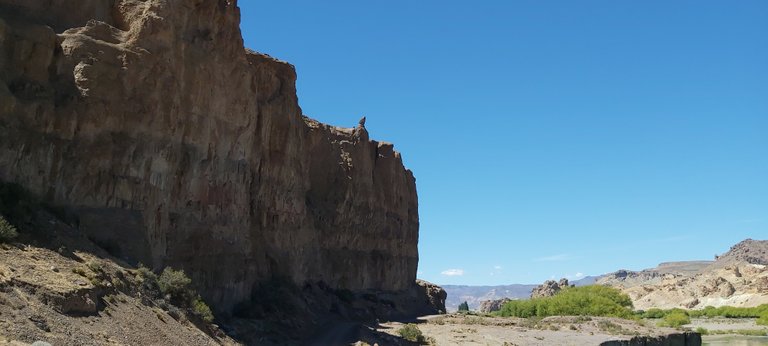

La estepa puede resultar chocante, angustiante y hasta repulsiva para el visitante desprevenido. La crudeza de su clima en extremo árido y desértico donde las precipitaciones son escasas provocan una vegetación arbustiva chata con abundante suelo desnudo a su alrededor, el panorama puede provocar tristeza y de hecho este estado se apropia del carácter de la mayoría de los escasos habitantes de la región que en general son callados, reservados y tímidos.
Sin embargo, hay vida en la estepa, los escasos ríos que la atraviesan pueden representar oasis de agua y vegetación verde y abundante, contraste absoluto con el resto de la geografía.
Los caminos de tierra y polvo escasamente transitados suelen estar cerca del cauce de los ríos, es una forma de estar cerca de una fuente de agua que puede ser escasa o nula en muchos kilómetros alrededor. Los caminos de tierra y polvo a la vera del río pueden significar la diferencia entre la vida y la muerte.
Camino a una de las más bellas expresiones del período Paleógeno, con una antigüedad de casi 60 millones de años, una gran caldera que explosionó en una erupción gigantesca dejó una enorme depresión de 25 kilómetros de diámetro y casi en su vértice sur, diversas formaciones dignas de observar y admirar que se han convertido en un destino turístico de excepción.
El camino discurre bordeando el río Chubut, un curso de agua de escaso flujo que nace en la provincia de Río Negro en las estribaciones orientales de la Cordillera de Los Andes para depositar sus aguas en el Océano Atlántico luego de recorrer más de 800 kilómetros. Muchos habitantes de la planicie deben su vida y su sustento a las aguas de este río, los primeros inmigrantes galeses dan fe de ello.
Entre los pliegues de estas formaciones rocosas volcánicas, los cerros bajos forman un cañadón que sirve de marco al cauce del río, sus paredes y estribaciones presentan extrañas formas que la erosión hídrica y eólica modelaron en tantos millones de años, en cierta forma me hace recordar al Valle Encantado que está en el camino a la ciudad de Bariloche, un lugar con mucho más marketing seguramente pero con similar encanto, Aquí podemos jugar a encontrar formas y darles nombres; castillos, zorros, ventanas, manos, animales prehistóricos, aves, cualquier visitante con algo de imaginación podrá ver algunas de estas figuras posando la vista en alguna de las innumerables formaciones de los alrededores.
Una leyenda de la zona habla de un cóndor, esa magnífica ave voladora que está entre las más grandes del mundo, que de tan extasiada por la magnificencia del lugar se olvidó de todo, hasta de su propia existencia y quedó posado en el vértice de un alto cerro hasta convertirse en piedra. Desde allí vigila que el río continúe fluyendo, desde allí observa el polvoriento camino recordándole a los visitantes que la estepa también puede ser fascinante, bella y cautivadora, tanto como para entregarle la vida solo por la posibilidad de observarla por toda la eternidad.
Las fotografías son de mi propiedad excepto las que menciono la fuente.
The photographs are my property except those mentioned by the source.
Héctor Gugliermo
@hosgug